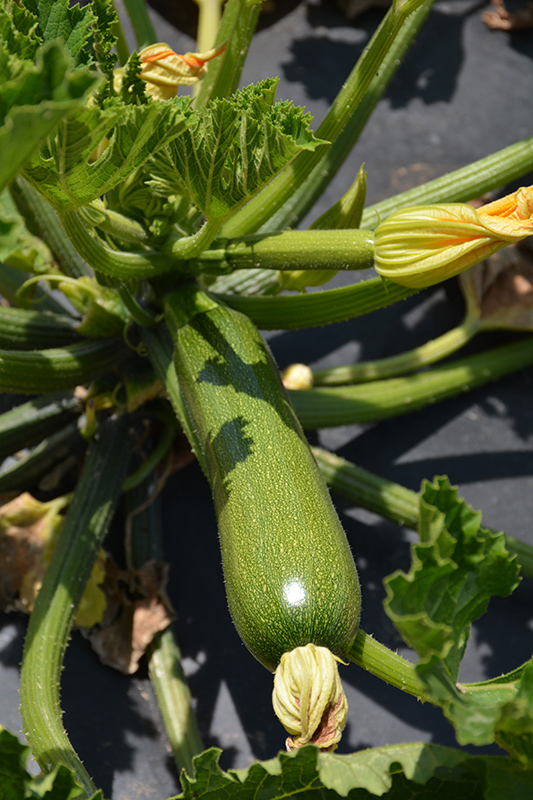Plant Finder
Aristocrat Zucchini
Cucurbita pepo var. cylindrica 'Aristocrat'
Height: 24 inches
Spacing: 18 inches
Sunlight:
![]()
Hardiness Zone: (annual)
Other Names: Courgette
Description:
A beautiful variety featuring neat and compact plants; producing medium sized, 8" long dark green fruit that is mottled with yellow; distinctive flavor, perfect for cooking and baking; flowers can be stuffed and fried or added to salads
Edible Qualities
Aristocrat Zucchini is an annual vegetable plant that is typically grown for its edible qualities. It produces dark green long fruit mottled with yellow and creamy white flesh which can be harvested at any point. The fruits have a pleasant taste.
The fruit are most often used in the following ways:
- Eating When Cooked/Prepared
- Cooking
- Baking
- Freezing
Planting & Growing
Aristocrat Zucchini will grow to be about 24 inches tall at maturity, with a spread of 3 feet. When planted in rows, individual plants should be spaced approximately 18 inches apart. This vegetable plant is an annual, which means that it will grow for one season in your garden and then die after producing a crop.
This plant is typically grown in a designated vegetable garden. It should only be grown in full sunlight. It does best in average to evenly moist conditions, but will not tolerate standing water. It is not particular as to soil pH, but grows best in rich soils. It is somewhat tolerant of urban pollution. Consider applying a thick mulch around the root zone over the growing season to conserve soil moisture. This is a selected variety of a species not originally from North America.; however, as a cultivated variety, be aware that it may be subject to certain restrictions or prohibitions on propagation.
Aristocrat Zucchini is a good choice for the vegetable garden, but it is also well-suited for use in outdoor pots and containers. With its upright habit of growth, it is best suited for use as a 'thriller' in the 'spiller-thriller-filler' container combination; plant it near the center of the pot, surrounded by smaller plants and those that spill over the edges. It is even sizeable enough that it can be grown alone in a suitable container. Note that when growing plants in outdoor containers and baskets, they may require more frequent waterings than they would in the yard or garden.
A NetPS Plant Finder tool

